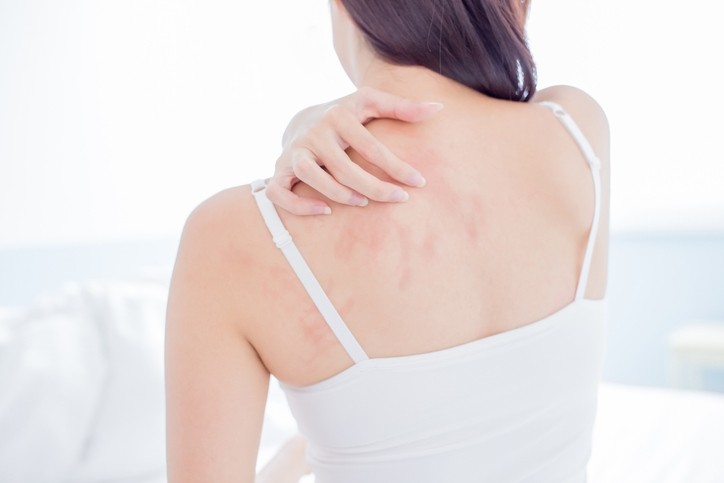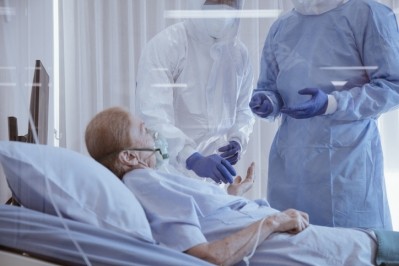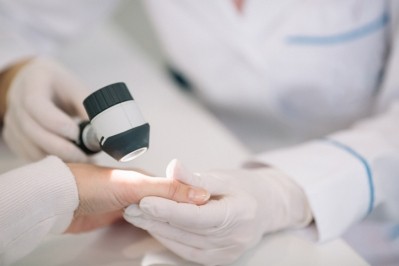Spanish study identifies five major COVID-19 skin manifestations

Writing in the British Journal of Dermatology, a team of researchers from hospital universities across Spain – led from Madrid and Barcelona – described cutaneous manifestations of the novel coronavirus (COVID-19) disease which they said had, so far, been “poorly characterised”.
“Previous descriptions of cutaneous manifestations of COVID-19 were case reports and mostly lacked illustrations,” the researchers wrote.
This current study, they said, described a “large, representative sample of patients with unexplained skin manifestations and a diagnosis of COVID-19; using a consensus method to define morphological patterns associated with COVID-19”.
Findings, they said, “may help clinicians approach patients with the disease and recognise paucisymptomatic cases”.
Nationwide image and clinical data analysis
The researchers used a nationwide collection survey of images and clinical data from 375 cases of confirmed and suspected COVID-19, provided by Spanish dermatologists between April 3 – April 16, 2020.
Findings from the survey enabled the team to describe five major clinical cutaneous patterns of the COVID-19 disease: acral areas of erythema-oedema with some vesicles or pustules (pseudo-chilblain); other vesicular eruptions; urticarial lesions; other maculopapules; and livedo or necrosis.
Skin manifestations categorised as ‘other maculopapules’ were identified in 47% of cases, some with perifollicular distribution and varying degrees of scaling. Urticarial lesions, mostly found on the trunk, and pseudo-chilblain, found on hands and feet, were each found in 19% of cases. Other vesicular eruptions like small monomorphic vesicles were identified in 9% of cases and livedo or necrosis in 6%.
“A few patients showed other manifestations such as enanthem or purpuris flexural lesions. Dermatologists also perceived an increased number of herpes zoster cases in COVID-19 patients,” the researchers wrote.
Patient demographics, symptom timing, severity and prognosis
Associations with different patient demographics, timing in relation to symptoms, severity, and prognosis were also detailed and illustrations of these patterns provided “to allow for easy recognition”, the researcher said.
Findings showed that skin manifestations largely appeared “late in the evolution” of the disease and behind other symptoms, though in 15% of cases, vesicular lesions appeared “early in the course of the disease” and ahead of other symptoms.
Pseudo-chilblain was seen more in younger patients and vesicular lesions more in middle-aged patients; livedo or necrosis was associated with more severe cases of COVID-19 and seen in older patients.
“Results are similar for confirmed and suspected cases, both in terms of clinical and epidemiological findings. Alternative diagnoses are discussed but seem unlikely for the most specific patterns (pseudo-chilblain and vesicular),” the researchers wrote.
‘Helpful’ research on skin manifestations
The researchers said that whilst COVID-19 was known to affect different organ systems, probably including the skin, there remained few descriptions and “no previous detailed classification” of skin manifestations associated with the disease.
This study, therefore, could prove useful in managing patients, recognising paucisymptomatic patients and may provide prognostic information.
“One strength of our study is that the description of clinical patterns has been done by experts based only on morphology. The resulting patterns were shown to allow for easy classification of patients and to correlate with differences in demographics and severity,” the researchers wrote.
Given the large number and distribution of participants, they said findings were “also likely to be representative of the overall distribution of cutaneous lesions in COVID-19”, though the usefulness of these patterns for diagnosis would need to be confirmed in clinical use.
Further research could also be improved by having more tests to confirm COVID-19 and exclude other infections, they said.
Source: British Journal of Dermatology
Published online ahead of print on April 29, doi: 10.1111/bjd.19163
Title: “Classification of the cutaneous manifestations of COVID-19: a rapid prospective nationwide consensus study in Spain with 375 cases”
Authors: C. Galvan Casas and A. Catala et al.
![Neuro-Bio believes there could, potentially, be a means to predict Alzheimer's and neurodegenerative diseases by looking at the skin [Getty Images]](/var/wrbm_gb_food_pharma/storage/images/_aliases/wrbm_medium/publications/cosmetics/cosmeticsdesign-europe.com/article/2022/10/03/brain-skin-research-by-neuro-bio-investigating-skin-biomarker-for-alzheimer-s-disease/15819036-1-eng-GB/Brain-skin-research-by-Neuro-Bio-investigating-skin-biomarker-for-Alzheimer-s-disease.jpg)





















